Original Title: "Complete Analysis of Mining Machines: The Evolution of Mining Hardware from CPU to ASIC"
Original Source: Dr. Chai Talks Crypto
Today, Dr. Chai will delve into the core tool of mining—mining machines. From the early home computer CPUs to today's professional ASIC miners, how has mining hardware evolved? How to choose a mining machine? This article will answer all your questions and take you into the hardware world of "digital gold mining"!
01 The Evolution of Mining Hardware: From Home Computers to Professional Mining Farms
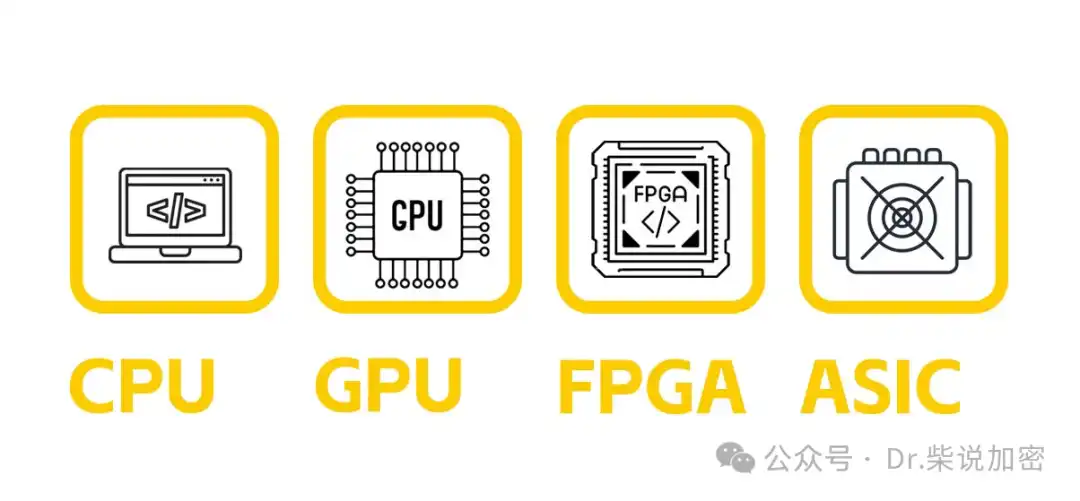
Bitcoin was born in 2009, and the development of mining hardware has gone through several stages. Let's travel through time to see this hardware revolution:
1 CPU Era (2009-2010): Mining with Ordinary Computers
· Background: When Bitcoin was first launched, its creator Satoshi Nakamoto could mine using an ordinary computer's CPU (Central Processing Unit).
· Features: At that time, the overall network hash rate was low, and an ordinary laptop could mine Bitcoin. For example, in 2010, someone mined over a thousand BTC with a home computer (now worth hundreds of millions of dollars!).
· Limitations: CPU hash power was weak and inefficient, and as mining difficulty increased, CPUs quickly fell behind.
2 GPU Era (2010-2013): The Rise of GPU Mining
· Background: Miners discovered that GPUs (Graphics Processing Units, such as NVIDIA and AMD graphics cards) were stronger than CPUs in parallel computing, making them suitable for mining hash calculations.
· Features: GPU mining efficiency increased by several times, attracting more people to join.
· Limitations: GPUs consumed a lot of power, had cooling difficulties, produced significant noise for home mining, and still had limited hash power.
3 FPGA Era (2012-2013): Transitional Phase
· Background: FPGAs (Field-Programmable Gate Arrays) are customizable hardware that is more efficient than GPUs but require specialized knowledge for configuration.
· Features: Lower power consumption than GPUs and stronger hash power, but expensive and less widespread.
· Limitations: FPGAs were a transitional technology, quickly replaced by more efficient ASICs.
4 ASIC Era (2013 to Present): The Dominance of Professional Mining
· Background: ASICs (Application-Specific Integrated Circuits) are specialized chips designed for specific algorithms (such as Bitcoin's SHA-256 and Dogecoin/Litecoin's Scrypt), far surpassing GPUs and FPGAs in performance.
· Features: ASIC miners have strong hash power and high efficiency, becoming the mainstream of modern mining.
· Current Status: By 2025, ASIC miners dominate Bitcoin and Dogecoin/Litecoin mining, with home devices having almost no competitiveness.
Summary

From CPUs to ASICs, the evolution of mining hardware represents a leap in hash power and efficiency, but it has also raised the entry barrier. Today, professional mining machines are mainstream, while ordinary people can still start mining some altcoins through GPUs.
02 Mainstream Mining Machines: Tools for Bitcoin/Dogecoin/Litecoin
By 2025, there are various mining machines available on the market, targeting different cryptocurrencies (such as Bitcoin's SHA-256 algorithm and Dogecoin/Litecoin's Scrypt algorithm). Below are introductions to the performance, price, and power consumption of several mainstream mining machines, based on the latest market information.
1 Bitcoin Mining: SHA-256 Algorithm Miners
These miners are specifically designed for Bitcoin (BTC), Bitcoin Cash (BCH), and other SHA-256 algorithm coins, featuring strong performance but high prices and power consumption.
· Antminer U3S23 Hyd.

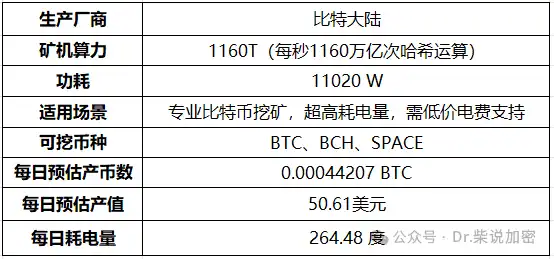
· Antminer S21e XP Hyd.
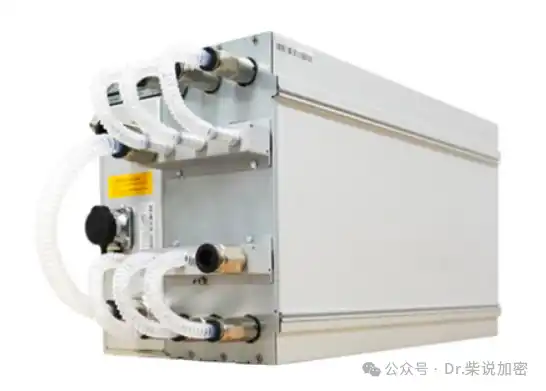
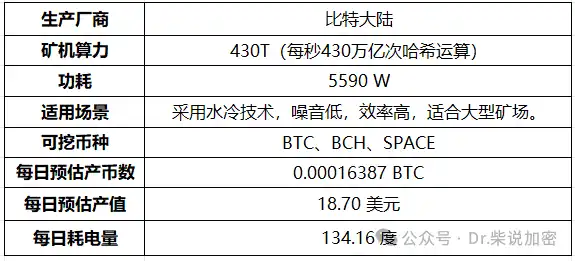
Note: The above estimated data results are applicable only for mining under the PPS mode. Due to factors such as mining machine and mining farm electricity, the calculation results are for reference only.
2 Dogecoin and Litecoin Mining: Scrypt Algorithm Miners
Dogecoin (DOGE) and Litecoin (LTC) use the Scrypt algorithm, which has lower hash power requirements compared to SHA-256, making some miners suitable for small to medium-sized miners.
· ElphaPex DG2+
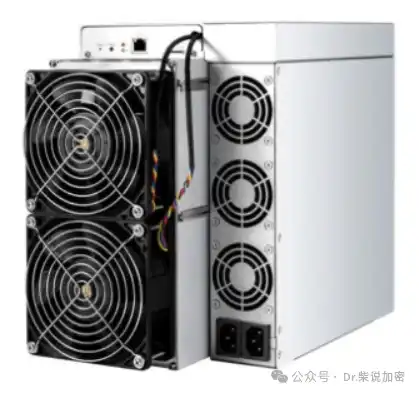
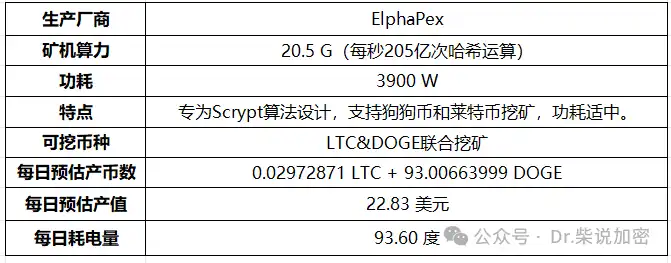
· ElphaPex DG Hydro 1

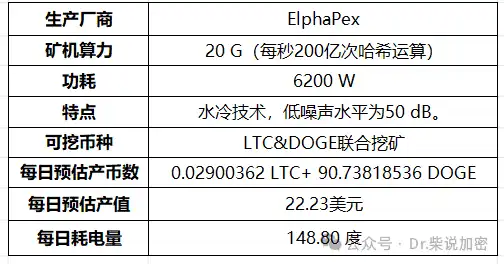
Note: The above estimated data results are based on current difficulty under the PPS mode. Due to factors such as mining machine and mining farm electricity, the calculation results are for reference only.
03 Performance Comparison of Mainstream Mining Machines
Below is a performance comparison of mainstream mining machines in 2025, covering Bitcoin and Dogecoin & Litecoin miners:
Bitcoin Miners

Data Source: F2pool
Dogecoin & Litecoin Miners:

Data Source: F2pool
Notes:
· Low power consumption per unit means high efficiency: Power consumption per unit indicates the energy consumed by the miner to produce a certain hash power. The lower the power consumption, the less electricity the miner uses to complete the same computational task, resulting in higher energy efficiency.
· Directly affects mining costs: One of the main costs of mining is electricity. Miners with low power consumption per unit consume less electricity for the same hash power, reducing the mining cost per unit of hash power and thus improving economic benefits.
· Environmental and sustainability: Lower power consumption per unit means less energy waste, less environmental impact, and aligns with the trend of energy conservation and emission reduction.
04 Cryptocurrency Mining Recommendations
Reminder: Engaging in cryptocurrency mining activities must comply with local laws and regulations.
Choosing a mining machine requires a comprehensive consideration of budget, electricity costs, mining goals, and site conditions. Here are some suggestions for reference:
1 Clarify Mining Goals:
Want to mine Bitcoin? Choose an SHA-256 miner, but it requires a high budget and low electricity costs.
Low-power Scrypt miners are more suitable for beginners.
2 Calculate Costs and Returns:
Use a mining profitability calculator to estimate the payback period.
Electricity costs are key: Electricity costs > $0.15 per kWh may lead to losses; it is recommended to choose areas with $0.08 per kWh.
3 Consider Site and Noise:
For home mining, choose low-noise equipment (water-cooled devices) or GPUs. Professional miners require independent space or mining farms.
Mining machines require regular maintenance, and attention should be paid to the safety of electrical equipment.
4 Pay Attention to Market Fluctuations
The market prices of Bitcoin, Dogecoin, and Litecoin will directly affect mining profitability.
In high volatility situations, professional miners can lock in future profits through "hedging."
Choose mining pools that support multiple cryptocurrencies to flexibly switch to high-profit coins.
05 Conclusion: The Future of Mining Hardware from CPU to ASIC
From CPU mining at the birth of Bitcoin in 2009 to the current dominance of ASIC miners, the evolution of mining hardware not only witnesses the rapid development of the cryptocurrency industry but also profoundly changes the rules of the "digital gold mining" game.

In the early days, ordinary people could participate in Bitcoin mining with home computers and easily earn "digital gold"; today, Bitcoin mining has become a stage for professional players, with ASIC miners becoming the standard for large mining farms and professional miners due to their ultra-high hash power and energy efficiency. This specialized hardware is optimized for Bitcoin's SHA-256 algorithm, providing unparalleled performance, but the high costs and specialized operational requirements deter ordinary people.
At the same time, cryptocurrencies based on the Scrypt algorithm, such as Dogecoin and Litecoin, have preserved a fertile ground for newcomers. GPU mining and entry-level Scrypt miners attract budget-conscious or novice players with lower costs and flexibility. The allure of Dogecoin's "meme wealth" and Litecoin's stable ecosystem make these coins ideal choices for small-scale mining.
Looking ahead, the trend of mining hardware will become more diverse:
· Efficiency Improvement: The next generation of ASIC miners will further optimize energy efficiency, reducing power consumption per unit of hash power, possibly adopting more advanced chip processes.
· Green Mining: As environmental controversies intensify, mining machine designs will focus more on compatibility with renewable energy sources, such as hydropower, wind power, or solar energy, to reduce carbon footprints.
· Revival of Home Mining: With the development of low-power devices, there may be more Scrypt miners suitable for home environments in the future, allowing ordinary people to easily participate in Dogecoin or Litecoin mining.
· Decentralization Challenges: The high entry barrier of ASICs concentrates hash power in large mining farms, and new types of hardware or algorithms may emerge in the future to encourage more individual miners to participate, maintaining the decentralized spirit of blockchain.
免责声明:本文章仅代表作者个人观点,不代表本平台的立场和观点。本文章仅供信息分享,不构成对任何人的任何投资建议。用户与作者之间的任何争议,与本平台无关。如网页中刊载的文章或图片涉及侵权,请提供相关的权利证明和身份证明发送邮件到support@aicoin.com,本平台相关工作人员将会进行核查。




